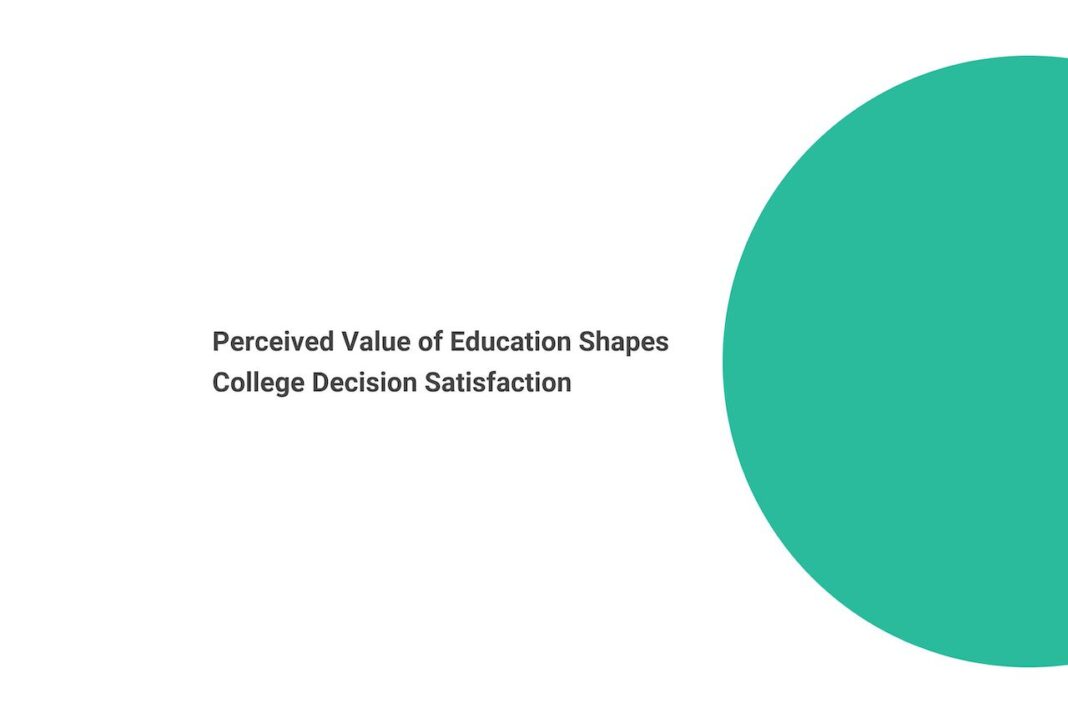
A College Pulse survey of more than 3,000 undergraduates fielded during the last week of September reveals that students who believe they are getting a good value for their education would choose their same college if they could make their decision again. In contrast, students who don’t believe they are getting value from their education would choose another college.
Two-thirds (66%) of students who strongly or somewhat disagree with the statement, “I’m getting a good value for my education,” would have made a different college choice if they could have. For students who believe they are getting a good value at their college, this number is only 27%.
Students who are currently attending two-year institutions are significantly more likely to agree that they are getting a good value for their education compared to their counterparts at four-year colleges (77% vs. 60%). Two-year students are also more likely to say they would choose their same institution if they could make their decision again (74% vs. 68%).
Two-Year Students are More Likely to Say They are Getting a Good Value for Their Education
How much do you agree or disagree: “I’m getting a good value for my education”?
This may be due in part to the fact that two-year students are more likely to say that cost was one of the most important determinants of their initial decision about what college to attend. Two-year students are much more likely than four-year students to report that cost was the primary driver of their college choice (48% vs. 32%). In contrast, students at four-year colleges are more likely to report that they chose their college because of the value it signaled to prospective employers (12% vs. 2%).
“It’s a scary world out there, full of uncertainty. We hear the stories of people never using their degrees so often, and the competitive nature of most fields is intimidating. We’re also unsure of how our knowledge will translate to an actual career. My advice [to my college] is to be aware of these very real fears and to take steps towards improving our confidence after graduation.” —Southern Illinois University student
In a time when so much learning has moved mostly or entirely online, the value proposition of traditional four-year colleges is under scrutiny like never before. We asked students, “Could online learning replace in person education?” While a majority (59%) of students overall report that online learning couldn’t replace in-person learning, more than one-third (35%) of students at two-year universities believe online education could replace in-person courses. Nearly one-quarter (23%) of four-year students agree.
Two-Year Students are More Likely to Believe Online Courses Could Replace In-Person Learning
Could online courses replace in-person lectures?
Two- and four-year colleges alike are forced to confront difficult decisions in the COVID-19 era. Should they bring students back to campus, or maintain remote learning until there is less uncertainty or a vaccine is developed? In the meantime, colleges must confront the challenging questions students are asking of their colleges and universities — namely, what investments will colleges make to deliver the value that students expect, especially since so many universities have not reduced tuition for exclusively distance learning?
We asked students what investment was most important. About one-third (37%) of students identify that they want their college to make stronger connections to the labor market and better prepare them for the working world — a priority shared between two- and four-year college students.
A Majority of Students Want their Colleges to Help Students Make Stronger Job Market Connections
From the list below, which investment is most important to you?
However, students also recognize that there are opportunities to improve the delivery of their current online learning experience. Equal numbers of students identify training professors to better use online tools (13%) or improving the online learning experience (12%) as the most significant investment their college could make to improve their college experience.
While there are tangible improvements that colleges can and should be making, students are also asking for something much more human during this unprecedented time: understanding. As a student at Howard University says:
“Please have grace. We don’t all live in the same time zone or have access to the same resources we did on campus.”
___________________________
Methodology: The survey was designed and conducted by College Pulse. The survey was fielded September 24 – September 30 and comes from a sample of 3,230 undergraduates who are currently enrolled full-time in four-year and two-year degree programs at 181 U.S. universities. The margin of error for the U.S. undergraduate population is +/- 1 percentage points, and the margin of error for college student sub-demographics range from 2-5 percentage points. The initial sample was drawn from College Pulse’s American College Student Panel™ that includes more than 400,000 verified undergraduate students representing more than 1,000 different two- and four-year colleges and universities in all 50 states.




